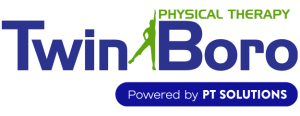Background & Etiology
The ulnar nerve is a part of the medial cord of the brachial plexus. The brachial plexus is a network of nerves that originate in the cervical and thoracic spine, which control the muscle movement of the shoulder, arm and hand. The ulnar nerve runs from the collarbone, along the inside of the upper arm, through the cubital tunnel at the elbow, down the inside of the forearm, through the wrist and into the little-finger side of the hand.
The ulnar nerve can become entrapped (compressed) disrupting its function and causing ulnar neuropathy. The most common places for the ulnar nerve to become entrapped are the cubital tunnel in the elbow joint, the Guyon’s canal in the wrist, or beneath the collarbone.
The exact cause of nerve entrapment can vary. Common causes of ulnar neuropathy include:
- Previously existing conditions like a fracture of the elbow, bone spurs, swelling of the elbow joint, or a cyst in the Guyon’s canal.
- Trauma or a direct blow to the inside of the elbow
- Repetitive strain on the elbow and hand caused by leaning on these joints for long periods of time
- Sleeping with the arm curled up and the elbow bent can irritate the ulnar nerve
- Repetitive strain from activities that stress the elbow joint and “heel” of the hand (such as using hand as a hammer).
Irritation of the ulnar nerve can sometimes be confused with irritation of the median nerve, because both conditions cause tingling and numbness in the fingers. The ulnar nerve effects the ring and little fingers, while the median nerve effects the thumb, pointer (index), and middle fingers.
- Tingling, and a feeling of “pins and needles” in the ring and little fingers, particularly when the elbow is in a bent position.
- Trouble sleeping caused by the loss of feeling in the ring and little fingers
- Pain on the inside of the elbow
- Difficulty moving the ring and little fingers, or grasping objects.
- Loss of coordination
- Muscle wasting in the hand (in severe cases)
If an individual suspects they have tendinopathy, the initial treatment should consist of avoiding the positions and activities that produce the pain. A course of conservative treatment is usually recommended that would include rest, ice, hand therapy and non-steroidal medications to reduce inflammation. If symptoms persist, treatment by your physician may be necessary. This may include steroidal medication or injections, in conjunction with therapy. Surgery for ulnar neuropathy may be considered in extreme cases to take pressure off the nerve.
Hand Therapists are occupational therapists or physical therapists who, through advanced study and experience, specializes in treating individuals with conditions affecting the hands and upper extremity. A hand specialist may also have advanced certification as a Certified Hand Therapist (CHT). A qualified hand therapist is educated and trained to administer interventions. As stated in The Guide to Physical Therapist Practice, interventions are the skilled and purposeful use of therapy methods and techniques to produce changes consistent with the diagnosis, prognosis and goal of the patient or client
Common interventions in the treatment of Ulnar Neuropathy include:
- Manual Therapeutic Technique (MTT): hands on care including soft tissue massage, and manual stretching by a hand therapist to regain mobility and range of motion of the hand and forearm.
- Splinting: Fabrication of custom-made splint or fitting of pre-fabricated splint for protection, rest and proper positioning of involved area to assist in healing and decreasing nerve irritation.
- Therapeutic Exercises (TE) including stretching and strengthening exercises to regain range of motion and strengthen the arm and effected muscle.
- Neuromuscular Reeducation (NMR) to restore stability, retrain the upper extremity, and improve or modify movement technique and mechanics (for example, fine motor, lifting, or grasping activities) in daily use of the involved upper extremity. Sensory stimulation for sensitizing or desensitizing affected area as appropriate.
- Modalities that can include the use of ultrasound, electrical stimulation, ice, cold laser and others to decrease pain and inflammation at the hand, forearm and elbow.
- Home program that includes splinting, strengthening, stretching and stabilization exercises and instructions/modifications to help the person perform daily tasks and advance to the next functional level.
Procedures that your physician may recommend and perform in addition to physical therapy that include:
- REST and ICE
- The use of NSAIDS (Non Steroidal Anti-Inflammatory Drugs)
- Steroidal injections to reduce inflammation
- Pain medication to reduce the discomfort and allow the patient to perform the recommended exercises
- Surgery to correct underlying pathology or the cause of the condition
Prognosis
Most patients recover full function following a course of conservative care that includes physical therapy, medication and/or injections. It is important that once the pain and inflammation is reduced, and motion and strength are restored, the patient gradually returns to full activities. Instruction in daily activities or sport performance is helpful for reducing a reoccurrence of ulnar neuropathy.

